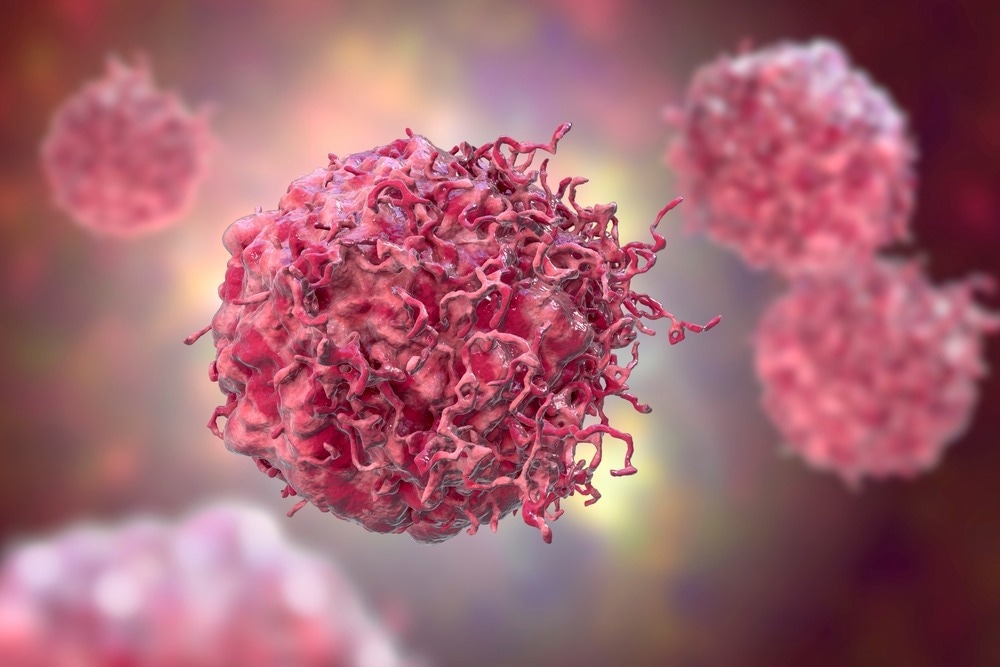Artificial nanomotors with advanced functions, such as motility and miniaturization, enabled the exploration of new strategies for cancer treatment. However, these nanorobots do not contain multiple functions that could help progress this technology rapidly.

Study: Dual-source powered nanomotor with integrated functions for cancer photo-theranostics. Image Credit: Kateryna Kon/Shutterstock.com
In a recent study, researchers proposed a dual-source powered Janus nanomotor containing multiple photo-theranostic functions, for example, photodynamic therapy (PDT), surface-enhanced Raman scattering (SERS) sensing, photothermal therapy (PTT) and fluorescence imaging/photoacoustic imaging (PAI). This study is available as a pre-proof in Biomaterials.
Merits of Theranostics Approach in Biomedicine
The combination of diagnosis and therapy is referred to as theranostics. One of the key advantages of this strategy is that it enables image-guided therapy. Several light-sensitive bioimaging and therapeutic agents are available that allow remote controllability and non-invasiveness, with significant effectiveness.
Theranostic capacity has been immensely expanded with the development of PAI, which acts as micro/nano-carriers. Additionally, therapeutic methods, such as PDT and PTT, exhibited significant efficacy in cancer treatment. Although photo-theranostics has combined imaging and therapeutic modalities into a single platform for better clinical outcomes, formulating efficient imaging/therapy reagents has remained challenging.
Biomedically engineered micro-/nanomotors (MNMs) have been applied in microsurgery, minimally invasive treatment, and disease diagnosis. The development of synthetic MNMs-based nanoplatforms with active self-propulsion capacity at the nanoscale has enabled the precise targeting of tumor cells. Furthermore, this nanosystem is stable in the tumor microenvironment and has displayed enhanced cell and tissue penetration capacity. Therefore, the MNM-based nanoplatform has great potential in cancer photo-theranostics.
Development of Novel Nanomotors for Photo-Theranostics Application
Recently, researchers have designed a new photo-theranostic nanomotor by combining several diagnostic and therapeutic functions. They created up-converted nanoparticles (UCNPs) in multiple layered structures of NaYF4:Yb, Tm@NaYF4:Yb, and Nd@NaYF4, via thermal decomposition, whose average diameters were estimated to be approximately 29.1 nm, 42.7 nm, and 59.8 nm, respectively.
Fluorescence analysis exhibited a promising upconversion luminescence activity in the newly synthesized UCNPs. When UCNPs were exposed to 808 nm NIR light, they illuminated. Mechanistically, Nd3+, which is present on the outer shell of UCNPs, becomes excited when exposed to 808 nm near-infrared (NIR) light. Upon excitation, it transfers the energy to Tm3+ activators by sensitizer Yb3+, resulting in the emission of visible blue light.
The UCNP nanocrystals were encapsulated by a mesoporous silica (mSiO2) coating layer, forming UCNPs@mSiO2 (UMS). Subsequently, the amino group was introduced onto the mSiO2 surface (UMS-NH2) and gold (Au) was sputtered to one side. Thereby, Au-functionalized Janus nanoparticles were formed, which were denoted as UCNP@mSiO2@Au (UMSA).
To equip the nanomotor with PDT, photosensitizer 5,10,15,20-tetrakis (4-aminophenyl) porphyrin (TAPP) was added to the surface of the mSiO2 forming UMSTA3. Scientists next modified TAPP with glutaraldehyde (GA). Finally, a catalase was added to UMSTA3 that served as a nano-engine to provide thrust force to the nanomotor (UMSTCA3). Because of its nanoscale dimension, UMSTCA3 nanomotors exhibited a high rotational diffusion coefficient
A specially designed software was written to measure the nanomotor trajectories. Analysis of the nanomotor trajectories showed higher H2O2 fuel concentrations promoted greater diffusiveness. Interestingly, the nanomotor's motility could be increased by enhancing H2O2 concentration and application of NIR light.
The main functions of the UMSTCA3 nanomotor are to detect tumor cells, performing dual-modal bioimaging (PAI/FLI), and NIR-triggered phototherapy (PTT/PDT). This nanomotor uses H2O2 tumor biomarker sensing to achieve tumor cell sensing. PDT treatment is associated with producing reactive oxygen species (ROS) to eliminate tumor cells.
Taken together, the current multifunctional nanomotor is equipped with PTT, SERS, and PDT sensing functions. The combination of UCNPs and photosensitizer offers PDT, while the gold nano-shell offers SERS and PTT sensing.
Efficacy of Cancer Photo-Theranostics through in vivo and in vitro Studies
The photo-theranostic capability of the nanomotor was tested using cellular experiments and animal models. The biological safety profile of both UMSTA3 and UMSTCA3 nanomotors was analyzed. In vitro studies, using 3-(4,5-dimethylthiazol-2-yl)-2,5-diphenyltetrazoliumbromide (MTT) assays, demonstrated considerable biocompatibility and marginal cytotoxicity.
Compared to a single PTT treatment for cancer, UMSTCA3 nanomotors with synergistic phototoxicity of PTT and PDT eliminated cancer cells more efficiently. Additionally, the viability of cancer cells significantly decreased on elevating the NIR light dose. The live/dead assay also revealed that an increase in the NIR light significantly enhanced the number of dead cells.
Animal models were used to investigate the effectiveness of UMSTCA3 nanomotors in vivo. 4T1 tumor-bearing mice were injected with the newly designed nanomotors to test the effectiveness of nanomotors in cancer treatment. Tumor volumes of the treated mice were measured, and the result suggested that a single treatment of NIR laser irradiation or UMSTCA3 injection was insufficient to suppress cancer development. Maximum suppression of cancer cells was observed in mice treated with the combination of UMSTA3 and NIR laser at 808 nm.
In the future, more research is required to validate the findings. Also, the biocompatibility of the nanomotors needs to be assessed in further detail.
Reference
Chen, S. et al. (2022) Dual-source powered nanomotor with integrated functions for cancer photo-theranostics. Biomaterials. https://www.sciencedirect.com/science/article/pii/S0142961222003842.
Disclaimer: The views expressed here are those of the author expressed in their private capacity and do not necessarily represent the views of AZoM.com Limited T/A AZoNetwork the owner and operator of this website. This disclaimer forms part of the Terms and conditions of use of this website.